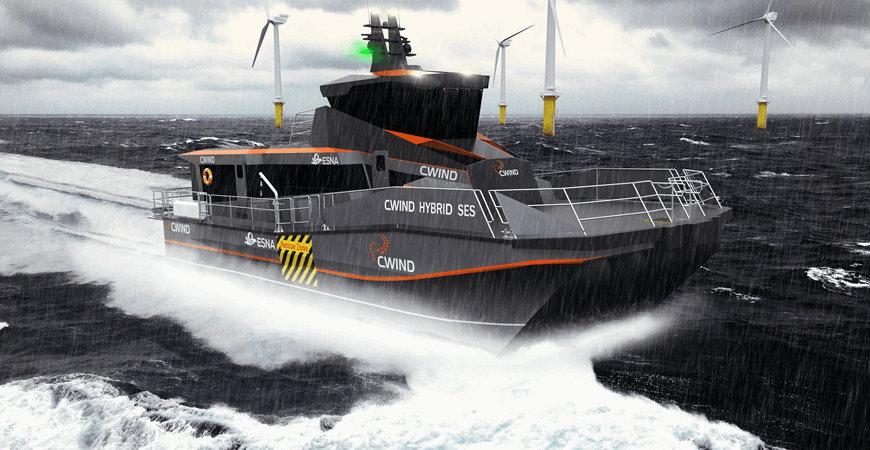Contact Us
Wednesday 11th December 2019

The zero-emissions goal is shared by many companies in the offshore wind industry. In recognition of our development of a low-emissions vessel, CWind was recently announced as one of four winners awarded funding and support through the Carbon Trust Offshore Wind Accelerator’s Low Emission Vessels competition, which will help fund development of our Hybrid SES CTV.
The aim of the Carbon Trust’s low-emission vessels competition is to accelerate the design and development of technologies with the potential to reduce emissions and fuel consumption of crew transfer vessels. For the Hybrid SES project, this means supporting the development of reduced emissions, fuel consumption and maintenance costs, understanding and evaluating the cost-benefit of existing and future powering and storage technologies from other industries, and assessing infrastructure required for offshore operations.
The project will kick off with modelling of the drivetrain power capabilities to provide data that enables operators to make informed decisions about which system will be best suited to them. It will also use data modelling to enable faster improvements than would normally be expected through conventional prototyping. The next stage is to deliver a simulation tool to model the driveline, the SES components and operational calculations as well as produce comparison data for conventional vessels. It will also test the hybrid drive to provide potential additional insights into possible efficiencies and perform full-scale trials to compare the results against the simulation tool initial data sets. The final work will be to look at the results with the simulation tool and factor in any new hybrid/battery technology for development and optimisation.
The vessel will make use of digital technology in a way not previously attempted. CWind is actively researching the viability of increasing the sensing and data gathering systems onboard by an order of magnitude over existing designs, coupled with partnering with some of the most exciting visualisation and AI development companies to deliver a system that uses big data to help continuous efficiency improvements.
For CWind there are several energy options that can be explored and developed, in the interim, including diesel and H2 fuel cells with a potential final option being a fully electric drive, using hydrogen fuel cells coupled with an energy dense battery for immediate access to power. This would be fully compatible with offshore charging systems being developed in parallel to the powertrain.
This project is another step towards the industry’s zero-emissions goal, recognising that the real challenge is developing the technology to deliver the power needed for current and future operations, and in a safe and sustainable manner. This will not be a leap to the finish line but rather a considered and positive move towards reducing the CO2 emissions of vessels supporting and maintaining our clean energy sources now and for the future.